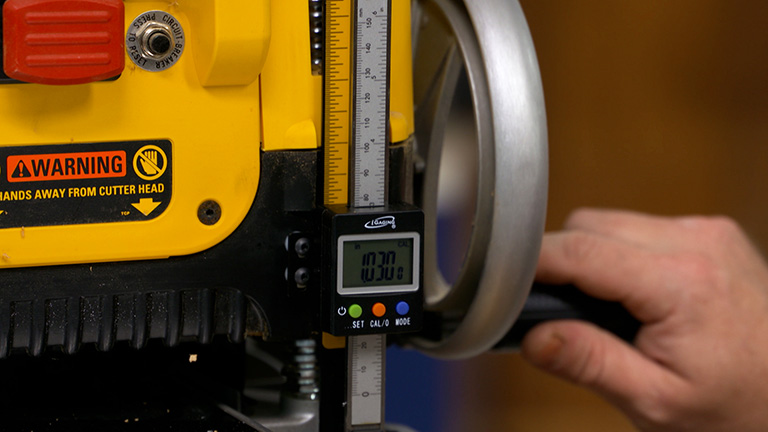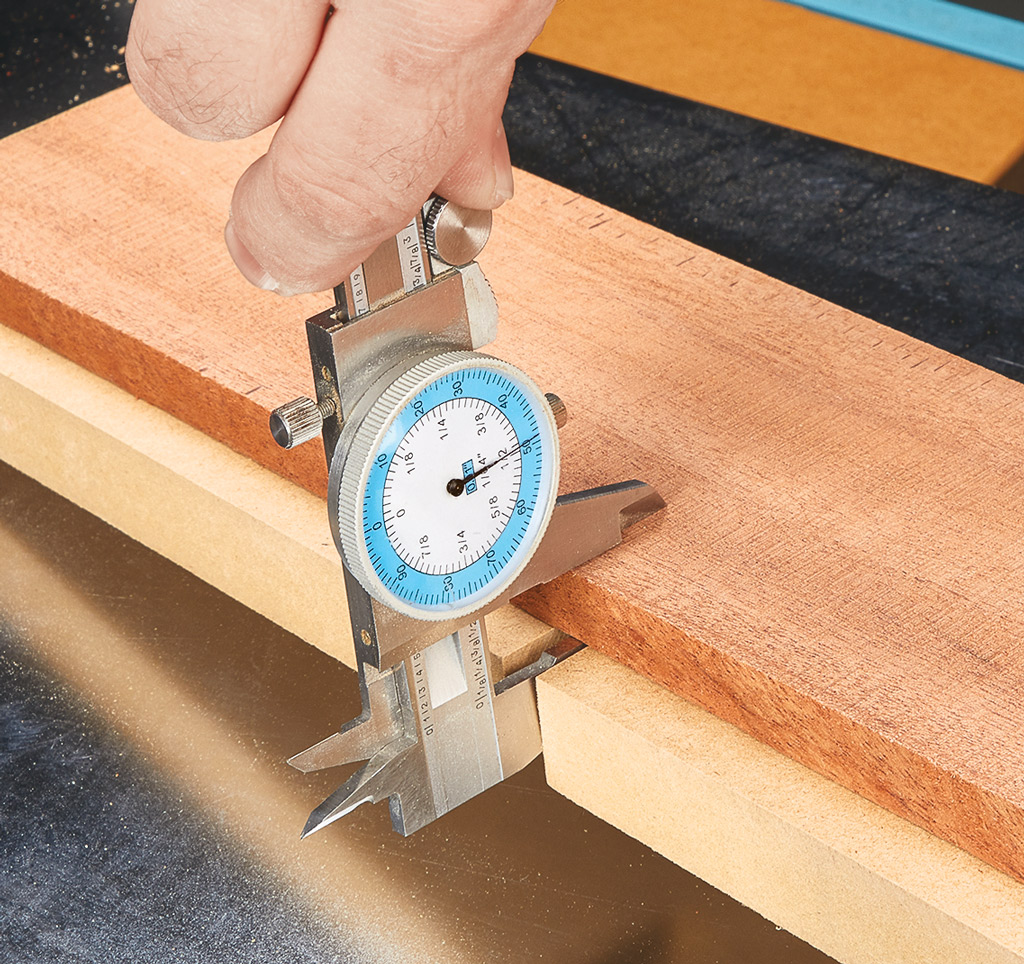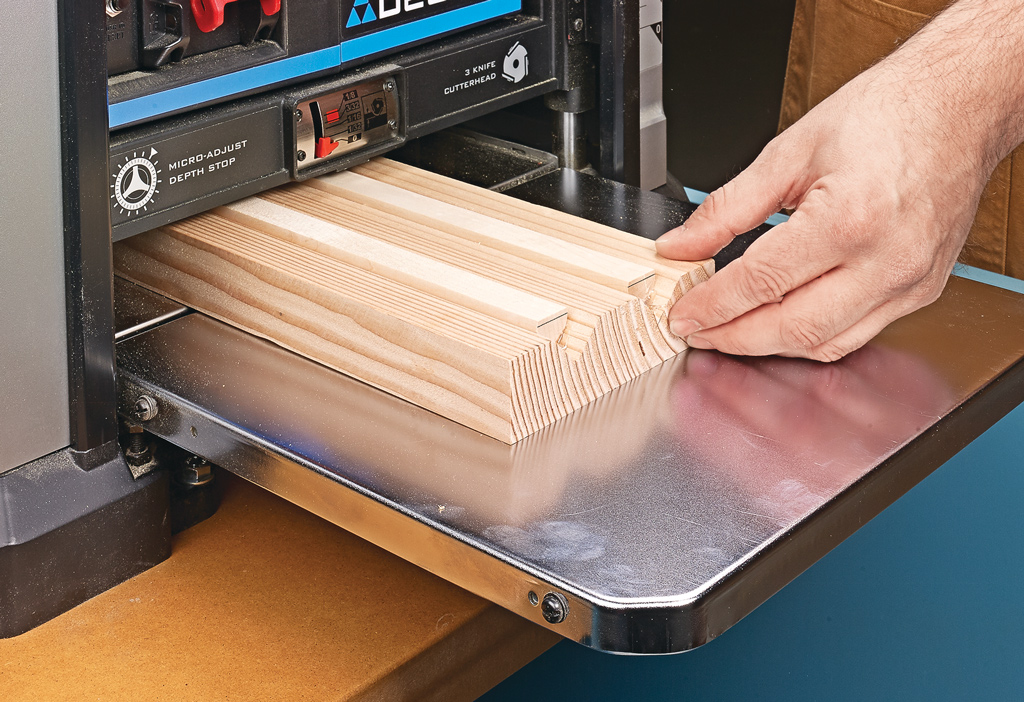If I were to ask you to name one of the most versatile tools in your workshop, it’s a pretty good bet that the thickness planer wouldn’t be on the list. Most of the time, it gets used for a single operation — making thick stock thinner. And it does this job really well. But through the years I’ve learned a few tips and tricks to get my planer to do much more than that.
Every once in a while I have a board that has some end-to-end twist, warp, or bow. The trouble is that if one face isn’t already surfaced, it may rock back and forth as it passes under the rollers. The solution to working with not-so-perfect stock is to use the sled and shims shown here. The idea is pretty simple. The workpiece rides on the sled and the shims keep it from rocking as it passes through the planer. This way, you’ll end up with a flat, smooth face. To prevent the shims from shifting, I like to secure them to the sled and the workpiece with hot melt glue.
For the first pass, find the high point on the board to be planed and set your planer to make a “skip” pass, removing no more than 1/32". Continue making shallow passes until the top face is planed flat. Once that’s complete, you can remove the sled and then plane the opposite face.

A planer also works well at squaring up and straightening the edge of a board. The challenge is balancing a piece on edge. To make it possible, simply attach a couple of narrow boards to the workpiece with double-sided tape. These “outriggers” work like the fence on a jointer. They help keep the edge of the workpiece square to the cutterhead as it passes through the planer.

Many thickness planers aren’t designed to handle very thin stock (3/16" or less). The problem is the cutterhead often can’t be lowered past a certain point, and so the rollers and knives won’t make contact with thinner pieces. Fortunately, there’s an easy solution to this problem. To safely plane a thin workpiece to the desired thickness, you need to “raise” the bed of the planer with an auxiliary bed. The bed is just a piece of plywood covered with plastic laminate and cut to the width of the planer bed. It’s held in place by a pair of cleats attached to the underside of the auxiliary bed. The cleats hook over the outside edges of the infeed and outfeed extension tables to keep the bed from moving. The auxiliary bed supports the workpiece as it passes through the planer and raises it high enough to contact the rollers and planer knives. Now, planing thin strips is just a matter of feeding them into the planer with the grain, taking several, very shallow cuts until you reach the desired thickness.

Another handy technique is to plane the edges of a number of pieces to exactly the same width (a set of rails and stiles for example). To do this, simply gang the pieces together and run them all through at the same time. For the best results, cut all the pieces to the same rough width before you plane them. Then, just hold the pieces together and feed them through the planer all at once.

Most planer manufacturers advise against planing pieces shorter than 12". But there are times when you need to plane a workpiece that’s already been cut to a short length. To solve this problem, you need to make the workpiece act like a longer board. You can do this by attaching a couple of long, narrow scrap pieces to the edges of the short board with double-sided tape. The support pieces span both feed rollers, so the workpiece travels smoothly through the planer. Make them at least the same thickness as the workpiece, but be sure they’re flush with the bottom face.













